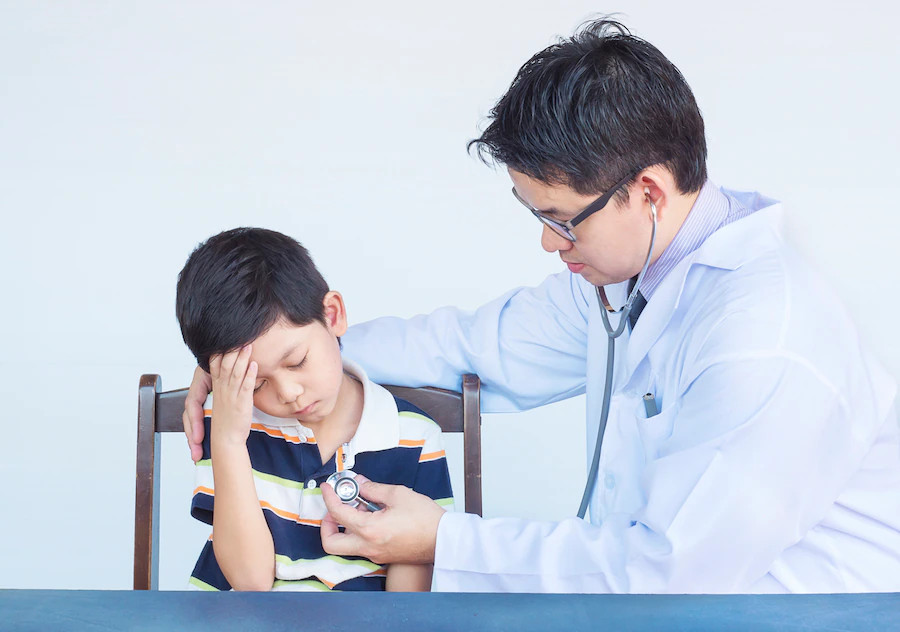Have you ever heard of the term 'snail fever'? Snail fever is a popular Indonesian term for schistosomiasis, a parasitic worm infection found in Africa, South America, and Southeast Asia. The term 'snail fever' is used because this disease is transmitted through larvae that live in snails' bodies.
What is schistosomiasis?
Snail fever, or schistosomiasis (bilharzia), is an infectious disease caused by the Schistosoma parasite. This disease can be acute or chronic and can affect various organs in the body, such as the lungs, nervous system, and brain. The affected organs vary depending on the parasite involved.
Schistosomiasis is usually not immediately fatal, but it can progress into a chronic condition that causes organ damage. Schistosomiasis in children can impair growth and cognitive development.
Transmission of Schistomosiasis
The parasitic worms that cause snail fever live in freshwater areas such as ponds, lakes, rivers, or reservoirs. These parasites can infect a person through contact with water contaminated with the parasite, for example, while swimming, washing, paddling a boat, or consuming food and water from contaminated areas.
When the parasitic worms enter the body through the skin, they nest for several weeks before hatching their eggs. The immune system will then attack the larvae, eliminating them through feces and urine. However, if this condition is not handled properly, the worms can continue to lay eggs in the long term.
Symptoms of schistomosiasis
The symptoms of schistosomiasis develop very slowly, according to the phase of the parasitic infection. Initially, schistosomiasis does not show specific symptoms. Early complaints experienced by the patient include itching and the appearance of a rash.
Other symptoms that appear 30–60 days after the infection include:
- Fever
- Chills
- Coughing
- Muscle pain
If not treated properly, symptoms that appear include:
- Abdominal pain
- Liver enlargement
- Blood in urine (hematuria) and stool (hematochezia)
- Difficulty urinating
- Miscarriage in pregnant women
In chronic schistosomiasis infection, this condition can cause liver injury and increase the risk of bladder cancer.
Treatment and prevention of schistosomiasis
Schistosomiasis can be treated with praziquantel, which is effective in eliminating parasitic worms. This medication is most effective when administered during the early growth stage of the parasitic worms, so patients may need to repeat the treatment several times within the first week of receiving the initial dose.
Steroid medications can also be used to treat acute schistosomiasis symptoms and other nervous system symptoms.
According to CDC guidelines, schistosomiasis can be prevented by minimizing direct contact with contaminated water or areas. This can be achieved by:
- Avoiding swimming in dirty water
- Drinking boiled water
- Eating well-cooked and clean food
Additionally, snails around the house can be eliminated using chemicals or snail predators, such as crayfish.
Schistosomiasis remains prevalent in Indonesia. This parasitic infection can be transmitted through activities involving contaminated freshwater. If you develop symptoms after using unsanitary freshwater, you should see a doctor right away.
If you need medical advice or consultation, you can either visit a doctor or make use of the consultation features that are available in the Ai Care application by downloading the Ai Care application from the App Store or Play Store.
Looking for more information about other diseases? Click here!
- dr. Monica Salim
CDC. Parasites-Schistosomiasis. Available from: https://www.cdc.gov/parasites/schistosomiasis/index.html#
WHO. Schistosomiasis. Available from: https://www.who.int/news-room/fact-sheets/detail/schistosomiasis
NHS. Schistosomiasis. Available from: https://www.nhs.uk/conditions/schistosomiasis/
Cleveland Clinic. Schistosomiasis. Available from: https://my.clevelandclinic.org/health/diseases/22631-schistosomiasis
Sehat Negeriku, 2018. Indonesia akan Eradikasi Demam Keong. Available from: https://sehatnegeriku.kemkes.go.id/baca/umum/20180117/3324407/indonesia-eradikasi-demam-keong/











